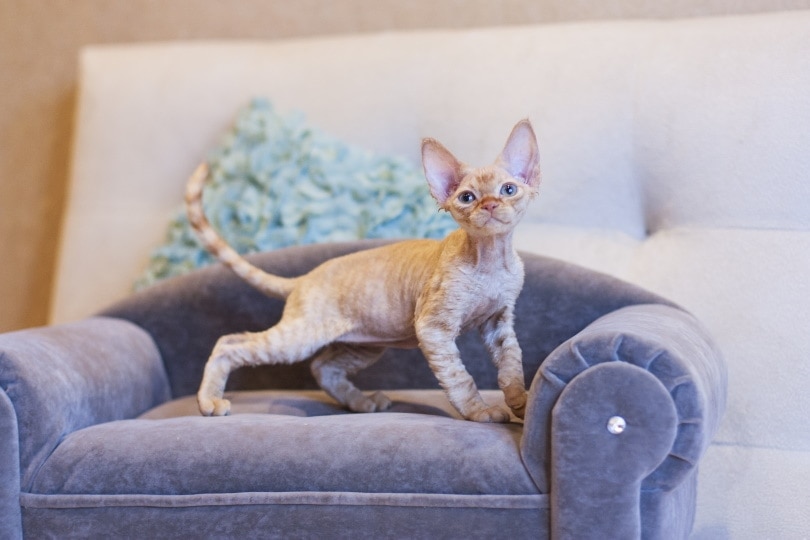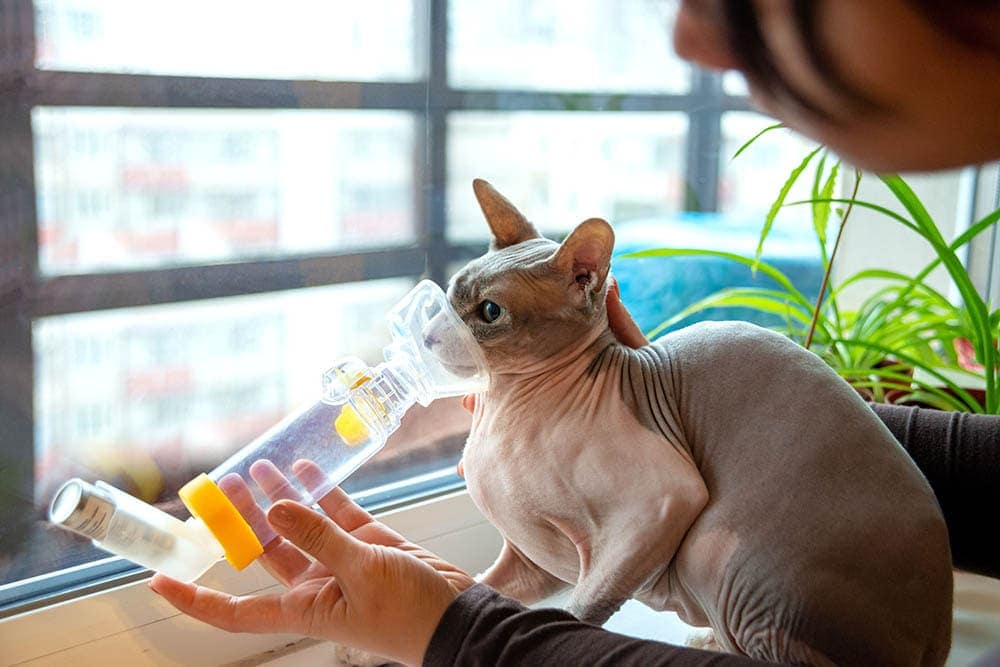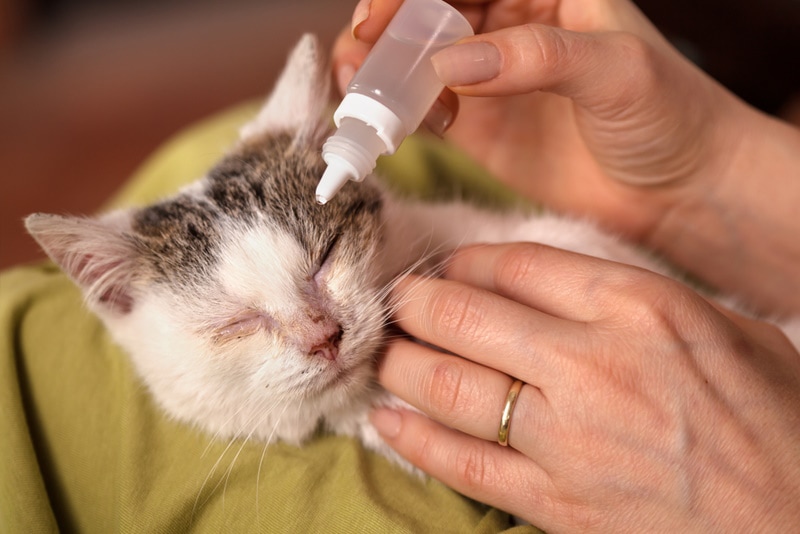How to Tell How Old a Cat Is – 4 Vet-Approved Steps
Updated on
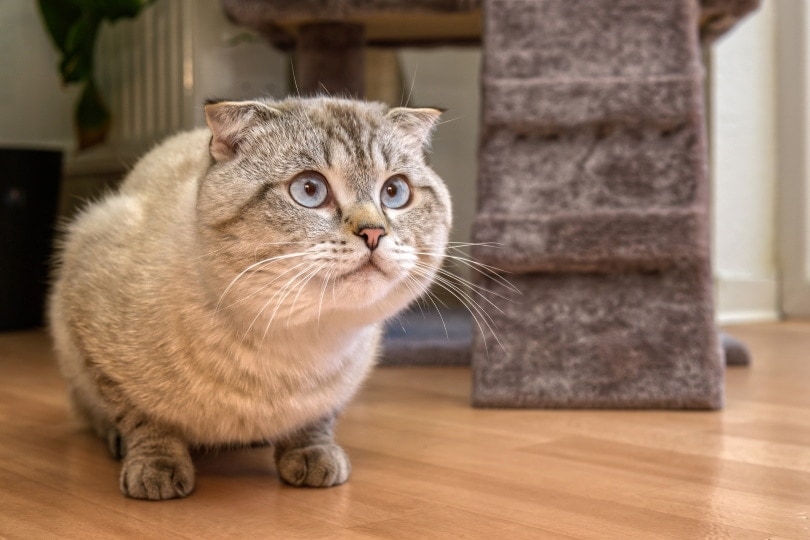
Maybe you found an abandoned kitten, or maybe you’ve always wondered what your adult shelter cat’s life was like before you adopted them. You might want to know a cat’s age for health reasons. Whatever your reason, figuring out a cat’s age can be a tricky business. It is much easier to tell age in kittens, but some signs can help you distinguish life stages in adult cats as well.
Before You Start
It’s important to set expectations before you try to determine a cat’s age. For young kittens, age can usually be marked to within a few weeks. For adult cats, it’s much more difficult. Health and lifestyle play a greater role in adult cats. For the purposes of this article, we will divide adult cats into three groups.
Young adult cats are approximately 1 to 3 years old. Young adult cats are at about their full size but might still have traits of a kitten’s metabolism and energy levels. They are usually healthy and active.
Mature adult cats are about 3 to 10 years old. They might be more sedentary than they used to be but still healthy if they don’t have underlying conditions and have had good care. Quality of life means that their aging process can vary widely.
Senior cats are over 10 years old. Even healthy cats will start facing declines in mobility and playfulness when they are into early double digits.
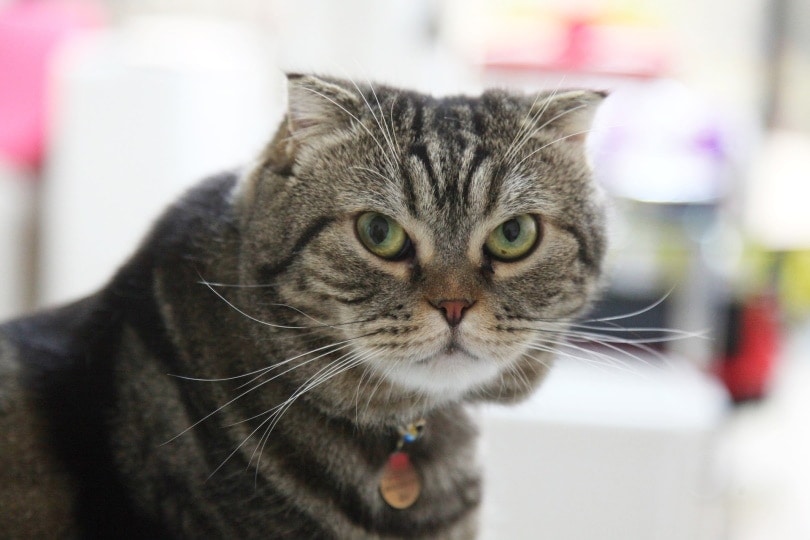
Preparation
When examining your cat to determine age, a few things can be helpful. Wrap your cat in a soft blanket or towel for easier handling. You might want to grab a flashlight to check your cat’s teeth. A small scale and a measuring tape can be helpful for kittens. As you examine your cat, be gentle. Don’t struggle with or force your cat.
The 4 Steps for Determining the Age of Your Cat
1. Check your cat’s weight and length
Most cats stop growing around 12-18 months. Adult cats vary widely in size, so checking weight isn’t reliable to determine the age. But if you think your cat might be a kitten, it can be a useful starting point to give you a ballpark weight. Kittens usually gain weight quickly in their first weeks of life—about 1 pound a month for the first 4 months.
After 4 months, weight gains are more variable, but most adult cats are at least 4 to 5 pounds unless malnourished. So, a 1-pound kitten is likely around a month old, while a 6-pound cat is probably an older kitten.
You can also measure your cat’s length and height over time. If you are unsure if your cat is still growing, a measurement from your cat’s nose to the base of their tail and from the floor to their shoulders can help you determine. Measure again a few weeks later. If your cat has grown longer or taller, they’re still a kitten, even if they are nearing adult size.
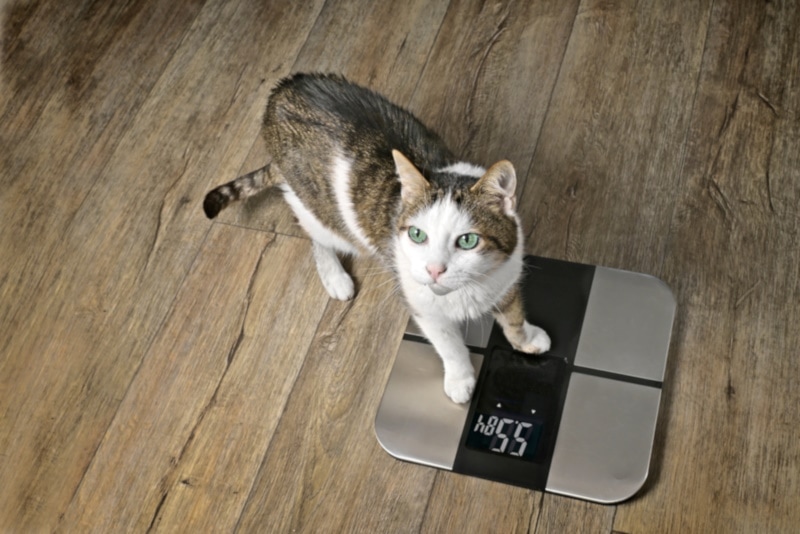
2. Check your cat’s teeth for signs of age
Teeth are one of the most reliable ways to tell a cat’s age. Like humans, cats have baby and adult teeth. Baby teeth start erupting around 3 weeks of age and finish around 6 months of age, overlapping with adult teeth eruption. The first teeth to come are incisors and canines in the front of the mouth, followed by premolars in the sides of the jaw.
Baby teeth begin to be replaced by adult teeth around 4 months of age. Between 5 and 6 months of age, kittens grow molars in the back of their jaw. If your kitten doesn’t yet have molars, they are around 6 months of age or younger.
Teeth can also be assessed in adult cats. Young adult cats should have white, clean teeth with no sign of yellowing or tartar. Over time, cats will accumulate plaque and general wear-and-tear, even when healthy. The rate depends on the cat, but pristine teeth are more likely to belong to young adult cats, while worn teeth are more likely to belong to older cats.
3. Look at your cat’s eyes
Kittens open their eyes within 10 days or so of being born. Newborn kittens have blue eyes. Most cats lose that color and get their adult eye color when they are around 7 weeks old. (Some types of cats, like colorpoint cats, always have blue eyes.)
As cats get older, the lenses to their eyes grow denser. This starts at around 8 or 10 years old, but it isn’t usually visible until the cat is around 10 years or older. If your cat has clouded eyes, they’re likely elderly.

4. Observe your cat’s behavior
Over time, cats’ abilities and behaviors change. Younger adult cats are often highly active. They are more likely to playfully attack hands or feet. Over the years, cats will become more sedentary as their metabolisms slow. As they reach old age, cats also begin to experience mobility issues. If you notice stiffness, difficulty in grooming despite being a healthy weight, or difficulty walking that doesn’t appear linked to an injury, you are likely looking at an elderly cat. A visit to your vet is essential to help your cat manage their age-related issues so that they can get the best quality of life possible.
Last Thoughts
It can be hard to determine a cat’s age, but these tips will help you know with greater certainty where a cat sits. If you want more specific information or expertise, you can always ask your vet during a regular checkup. Now that you know approximately how old your cat is, you can prepare for your cat’s changes over time.
Featured Image Credit: Gundula Vogel, Pixabay


